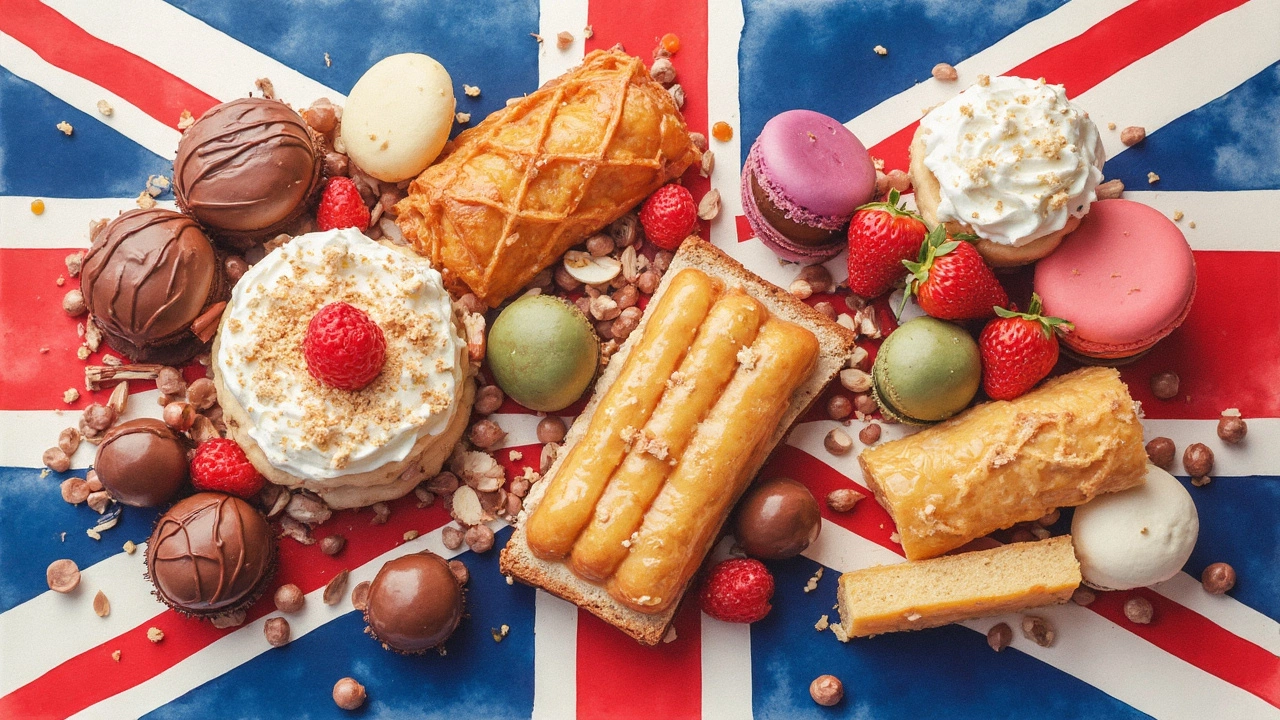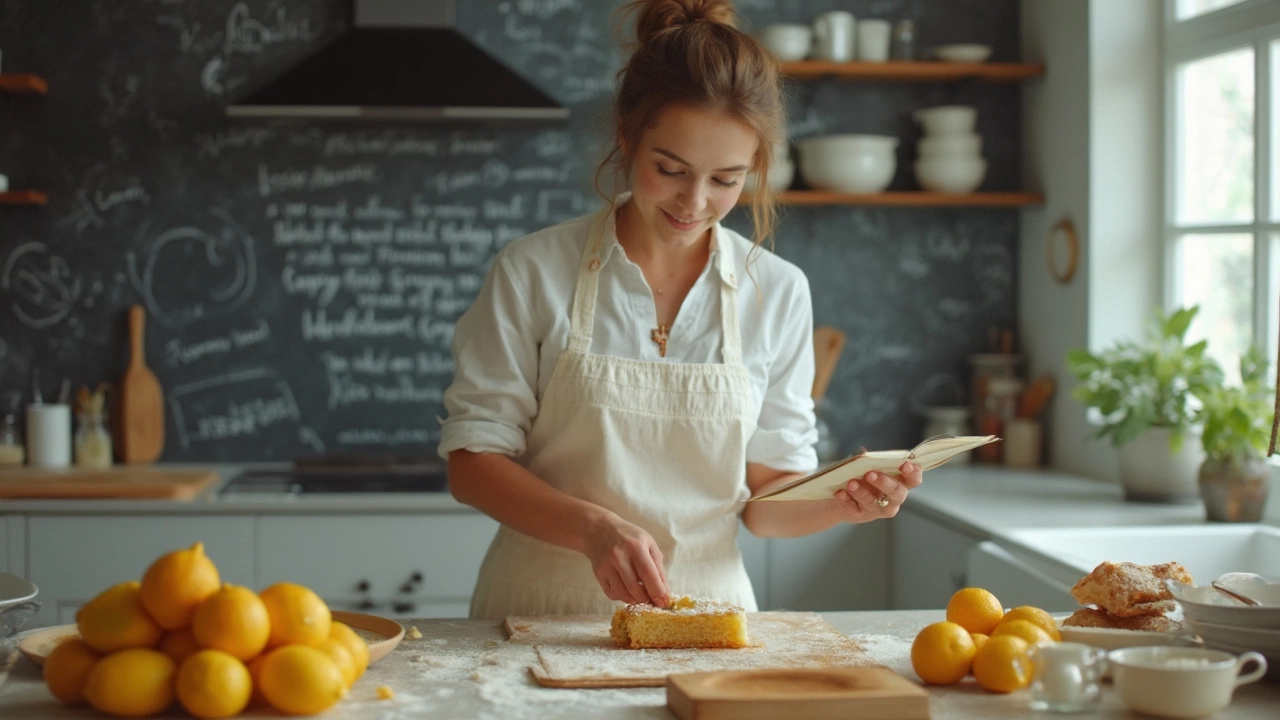Ever bit into something so good you stopped mid-sentence? That’s the magic of a true dessert legend—and everyone’s got an opinion about what tops the list. Maybe it’s the crispy caramel on a crème brûlée, the chewy brownie center, or the first scoop into a gelato. But what actually makes a dessert the best in the world?
Let’s break it down. People usually remember sweetness, of course, but texture is a game-changer. Think oozy, crunchy, creamy—sometimes all in one bite. And it’s not just about sugar: a twist of salt or hit of sour can take something from 'meh' to 'wow.' If you're baking at home, don’t forget that good ingredients—real cream, dark chocolate, fresh fruit—make all the difference.
Here’s the thing: the world is packed with incredible dessert traditions. So before you settle for another plain cake, let’s see what’s out there. You might find your next obsession from a country you’ve never even thought of—or discover you already have the skills to whip up something unforgettable tonight.
- What Actually Makes a Dessert 'Tastiest'?
- The Top Contenders: A Closer Look
- Chocolate Takes the Crown?
- Unexpected Global Favorites
- Tips to Level Up Your Homemade Sweets
What Actually Makes a Dessert 'Tastiest'?
Ever wonder why the tastiest dessert leaves such a lasting impression? It’s not just sugar and butter, though those help. There’s some real science (and a little nostalgia) behind what makes a dessert pop in your memory.
First up, there’s flavor balance. Too sweet, and you get bored fast. The best desserts—think of a gooey brownie with a sprinkle of salt or a tart lemon bar—have layers. There’s usually some kind of punch, like bitterness from cocoa, or tang from berries, that wakes up your taste buds. You’ll notice that most beloved sweets never go all in on just one note.
Texture’s another key player. People flip for desserts that bring more than one feeling: crispy on top, soft in the middle, or a smooth bite paired with crunch. Ever had a churro? That hot, crispy shell with soft dough inside—yeah, that combo is what gets people hooked. Ice cream works for the same reason: creamy base, with chunks of chocolate or nuts mixed in. Some food researchers even say texture has more to do with our favorites than flavor does.
Don’t forget aroma. Smell is tightly tied to memory. Freshly baked cookies? That scent alone can make your mouth water before you take a bite. This is a secret weapon for a lot of top dessert recipes.
What about that extra something—the story? A classic dessert usually has some nostalgia baked in. Your grandma’s apple pie, or the cake you always ate at birthday parties. Research from the University of Oxford shows that personal memories can boost our enjoyment of food by up to 25%, giving some sweets an edge simply because we’ve got feelings attached.
If you want your homemade best desserts to shine, focus on this checklist:
- Balance sweet, sour, salty, and bitter—don’t go one-note.
- Use ingredients with bold, natural flavors (ditch the artificial stuff).
- Pay attention to texture contrasts: creamy with crunchy, soft with crispy.
- Let your kitchen smell amazing—they say we eat with our nose first.
- If possible, add a story or tradition. People eat memories, not just calories.
Want some quick numbers? Check out this mini breakdown of who likes what, based on a 2023 survey by TasteAtlas:
| Dessert Feature | % of People Calling it "Key" to Tastiness |
|---|---|
| Texture | 38% |
| Flavor Balance | 35% |
| Aroma | 15% |
| Emotional Connection | 12% |
So, whether you’re eating or baking, chasing after the tastiest dessert is about way more than sugar. It’s about hitting all the senses—and maybe a sweet spot in your memory, too.
The Top Contenders: A Closer Look
If you ask people to name the tastiest dessert, you’ll get answers all over the map—literally. But some sweets keep showing up on 'best dessert' lists everywhere you look. So what’s made these best desserts stick around?
- Tiramisu (Italy): This one’s a heavyweight in the dessert world. Creamy mascarpone, coffee-soaked ladyfingers, a dusting of cocoa—hard to go wrong. It started in the Veneto region back in the 1960s and took over menus worldwide. Tiramisu’s huge because it balances sweet and bitter, plus it’s no-bake.
- Chocolate Brownie (USA): Simple, fudgy, and super addictive, brownies are a classic for a reason. They were first made around the 1890s in Chicago. Key tip: melt the butter for extra chewy texture. People love theirs with nuts, but a lot just want pure chocolate as the main event.
- Crème Brûlée (France): Break through its caramelized sugar top with your spoon and you get silky vanilla custard underneath. This treat goes back to the 17th century. That burnt sugar crust wouldn’t work without kitchen torches (or a really good oven broiler).
- Baklava (Turkey, Greece, Middle East): You get layers of filo pastry, honey, and nuts. Sticky, sweet, crisp, and somehow not too heavy. Baklava is older than most countries—some say it’s almost 800 years old and the Ottoman Empire made it famous.
- Gelato (Italy): Sure, the whole world eats ice cream, but gelato has less air and more flavor punch. It’s churned slower so it gets that dense, creamy texture. Real gelato only has around 7-8% butterfat versus American ice cream’s whopping 15%.
Just to put it in perspective, check out how these world desserts stack up in popularity:
| Dessert | Country | Google Searches (2024, monthly) |
|---|---|---|
| Tiramisu | Italy | 490,000 |
| Chocolate Brownie | USA | 510,000 |
| Crème Brûlée | France | 275,000 |
| Baklava | Turkey/Greece | 304,000 |
| Gelato | Italy | 612,000 |
Those numbers show how strong the craving for these dessert recipes really is. If you want to get a taste of history, each dessert is easy enough to find now in bakeries—or you could even whip up your own with a little effort and know-how.

Chocolate Takes the Crown?
If there’s one dessert ingredient that gets worldwide love, it’s got to be chocolate. Whether you’re team brownie, cake, mousse, or truffle, it’s everywhere—from street food in Mexico to luxury shops in Switzerland. A quick fact: over 7 million tons of chocolate are consumed every year across the globe, so it’s not just hype, it’s legit obsession.
Why does chocolate consistently make its way into lists of the tastiest dessert options? It’s all about chemistry. Chocolate melts right below body temperature—so it starts to get gooey and rich as soon as you take a bite. And thanks to sugar, cream, and sometimes a little salt, it delivers that perfect balance your taste buds crave.
If you want to nail a top-shelf chocolate dessert at home, start with high-quality chocolate. Look for bars labeled at least 60% cocoa for the richest flavor. Unsure where to start? Try one of these crowd-pleasers:
- Warm chocolate lava cake (center oozes out when you cut in)
- Classic fudgy brownies (think shiny tops and chewy middles)
- Chocolate mousse (light, airy, and easy to prep ahead)
Feel like getting fancy? A pinch of good sea salt or a few raspberries on top can really kick things up. Plus, a lot of folks don’t know that adding a splash of brewed coffee to your chocolate batter can amp up the flavor without making it taste like coffee.
| Chocolate Dessert | Origin | Best Feature |
|---|---|---|
| Chocolate Lava Cake | France | Melty center |
| Brownie | USA | Chewy, fudgy texture |
| Chocolate Mousse | France | Light, creamy |
Bottom line—dessert recipes built around chocolate rarely let anyone down. If you’re aiming for the world’s tastiest, it’s a smart place to start.
Unexpected Global Favorites
So, you think the tastiest dessert comes from France or Italy? Not so fast. Some of the world’s tastiest desserts show up in places most people don’t expect. Let’s get into some winners folks keep flying under the radar:
- Basbousa (Egypt): Moist, sweet semolina cake soaked in syrup—popular from Cairo to family dinner tables. The twist? It’s often flavored with rose water or coconut, making it completely different from Western cakes.
- Bibingka (Philippines): This rice cake is baked in banana leaves, topped with salted egg and cheese. The slight saltiness actually amps up the sweet bite and makes it addictive.
- Knafeh (Middle East): Think crunchy, cheesy, and syrupy, all at once. People from Lebanon to Palestine line up for this treat. Shredded phyllo dough, soft cheese, and orange blossom syrup mean your taste buds won’t forget it.
- Pavlova (Australia/New Zealand): Meringue with a crisp shell and marshmallowy inside, piled with whipped cream and fresh fruit. This one’s got drama and flavor in every bite.
- Ais Kacang (Malaysia): Here’s a wild one: shaved ice, sweet beans, corn, tropical fruits, all finished with condensed milk. Yes, it’s a sugar rush, but it’s genius on a hot day.
What do these dessert recipes have in common? Most aren’t heavy on chocolate or butter—so they highlight other flavors like citrus, floral notes, or even cheese.
One fun fact: According to a 2023 survey by the Global Culinary Institute, more than 65% of travelers said trying local sweets changed how they thought about what makes the best desserts.
| Dessert | Origin | Main Flavor |
|---|---|---|
| Basbousa | Egypt | Semolina, Syrup |
| Bibingka | Philippines | Rice, Coconut, Cheese |
| Knafeh | Levant | Cheese, Phyllo, Syrup |
| Pavlova | Australia/NZ | Meringue, Fruit |
| Ais Kacang | Malaysia | Shaved Ice, Beans, Fruit |
Still not convinced? Check out this take from pastry chef Cheryl Tan, featured in Dessert Weekly:
"The most memorable desserts I’ve tasted rarely come from fancy restaurants. It’s street food, homemade treats, and unexpected combos that make the biggest impression."
Next time you’re on the hunt for the tastiest dessert, go beyond the obvious. Sometimes the world’s best is hiding in plain sight at a small market stall or a neighbor’s kitchen table.

Tips to Level Up Your Homemade Sweets
If you're after the tastiest dessert at home, a few practical tweaks make all the difference. Forget about complicated decorations—focus on bold flavors and the right technique. Here are proven ways to boost your homemade dessert recipes and impress literally anyone who takes a bite.
- Start with real, quality ingredients: Skip anything labeled "imitation"—pure vanilla extract, fresh butter, and high-cocoa chocolate always outshine the cheap stuff. If you’re making something like brownies or mousse, you’ll actually taste the difference.
- Don’t rush your steps: Most desserts get better when you chill the dough, let cakes cool before icing, or mix batter just until combined. Science backs this up: chilling cookie dough for at least 24 hours makes cookies chewier and deeper in flavor, according to a 2008 New York Times baking experiment.
- Balance sweetness with salt or acid: A pinch of salt or a squeeze of lemon brings out more flavor and keeps desserts like cheesecake or lemon bars from getting cloying.
- Upgrade your finishing touches: Toasted nuts, a sprinkle of sea salt, or a bit of citrus zest instantly makes world desserts pop. Real whipped cream (not the spray-can stuff) also feels like a treat.
- Embrace textures: Combine soft with crunchy—like topping chocolate pudding with candied pecans or adding biscotti crumbs to your ice cream.
If you’re wondering how much little things can matter, just check out this quick comparison of basics versus upgrades.
| Basic Version | Upgraded Version |
|---|---|
| Box Mix Brownies | Add espresso powder, top with walnuts and flaky salt |
| Plain Vanilla Cake | Layer with fresh berries and lemon curd |
| Ice Cream Sundae | Use homemade hot fudge, sprinkle crushed amaretti cookies |
Try any of these tricks with your next best dessert and you'll taste the difference. Good desserts are fine—but great homemade ones are worth talking about.

